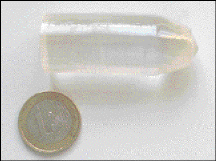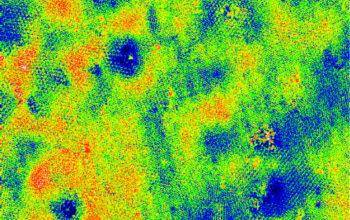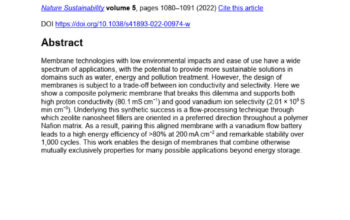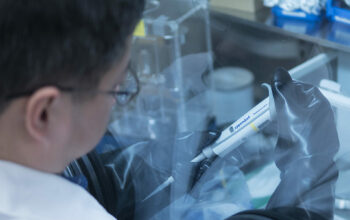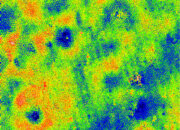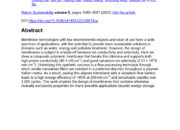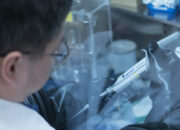Flawed by Design: When Defects Make Lasers Work Better
Lasers, those remarkable devices that emit coherent light through a process of stimulated emission, are fundamentally predicated on the quality of their active materials. Intuitively, one might correlate the efficiency and efficacy of lasers with impeccable materials devoid of imperfections. However, the advent of modern material science has illuminated an intriguing paradox: specific types of defects can actually enhance the performance of lasers. This paper endeavors to elucidate the mechanisms through which certain defects contribute positively to laser operation, the types of defects encountered, and their implications for future laser technology.
To comprehend the interplay between defects and laser functionality, it is essential first to understand the basic operational principles of a laser. At its core, a laser consists of a gain medium, which can either be solid, liquid, or gas, that is energized to achieve population inversion. This action allows the medium to amplify light. Yet, this process is not merely dependent on the formulation of the gain medium; the presence of defects can modify the electronic and optical properties in significant ways, engendering enhanced laser performance.
Defects, or imperfections in crystal lattices, can broadly be categorized into point defects, line defects, and planar defects. Point defects include vacancies, interstitials, and substitutional atoms. Line defects, often referred to as dislocations, arise from the misalignment within the crystal structure. Planar defects, such as grain boundaries and stacking faults, influence the material’s overall integrity. Each of these categories of defects can play a unique role in the physical processes underpinning laser operation, and their effects can be both beneficial and detrimental.
Taking point defects as a case in point, certain dopants—impurities deliberately introduced into a host material—can enhance the emission properties of lasers. For example, in solid-state lasers, the presence of rare-earth ions, such as neodymium (Nd3+) or erbium (Er3+), serves as effective means of modifying electronic states within the crystal lattice. The incorporation of these ions can lead to the creation of new energy levels that facilitate laser action. Further, vacancies can enhance the overall quantum efficiency of the gain medium by serving as non-radiative recombination centers, reducing losses that would otherwise impede the lasing process.
Moreover, dislocations can impart unique properties to laser materials. In some instances, these line defects can enhance the mechanical properties of crystals, increasing their resistance to thermal and mechanical stress. This fortification can lead to decreased probability of catastrophic failure under operational conditions. Interestingly, certain studies have demonstrated that dislocations could also act as channels for non-radiative transitions, providing pathways that limit heat generation, thereby improving the thermal management of lasers and expanding their operational lifetimes.
On the other hand, planar defects such as grain boundaries can significantly influence the optical properties of laser materials. For instance, in polycrystalline gain media, the interactions at grain boundaries can scatter light. While this scattering might initially appear detrimental, it can be harnessed to augment the light-matter interaction regime within the gain medium. Enhanced light confinement can result in increased gain, leading to improved output power and efficiency. Thus, while the innate characteristics of grain boundaries may introduce complexity, they can also serve a constructive purpose by making certain laser configurations viable.
The essence of these defects lies not merely in randomly occurring flaws but in their carefully orchestrated integration within the laser structure. The realization that defects can act as beneficial agents opens up expansive new avenues for research and development. Engineering defects with precision can pave the path for next-generation laser systems with bespoke properties tailored for specific applications such as communication, medical therapies, or industrial manufacturing.
It is imperative to note that while defects can enhance performance, they can also possess adversities. An unfavorable density of defects may lead to loss of material integrity, reducing efficiency or causing failure in laser operation. Hence, understanding the defect-microstructure-performance relationship remains crucial. The challenge resides not just in the existence of defects but in achieving a nuanced control over their types, densities, and distributions.
Furthermore, the incorporation of sophisticated characterization techniques plays a pivotal role in the study of defects in laser materials. Techniques such as X-ray diffraction, electron microscopy, and photoluminescence spectroscopy can elucidate the nature of defects and their implications on the electronic structures. Such insights are invaluable for engineers and scientists striving to optimize laser performance through deliberate design choices.
In conclusion, the concept of intentionally utilizing defects in laser materials uncovers an extraordinary dimension of material science. Flawed by design, these imperfections can yield a trove of advantages, enhancing light amplification through complex interactions. By fostering a deeper understanding of the nuanced roles that defects play, researchers can harness their power, driving innovation in laser technology. The future of laser development lies in embracing imperfection, for in flaws, we may find the key to unlocking unprecedented capabilities in photonic applications.
